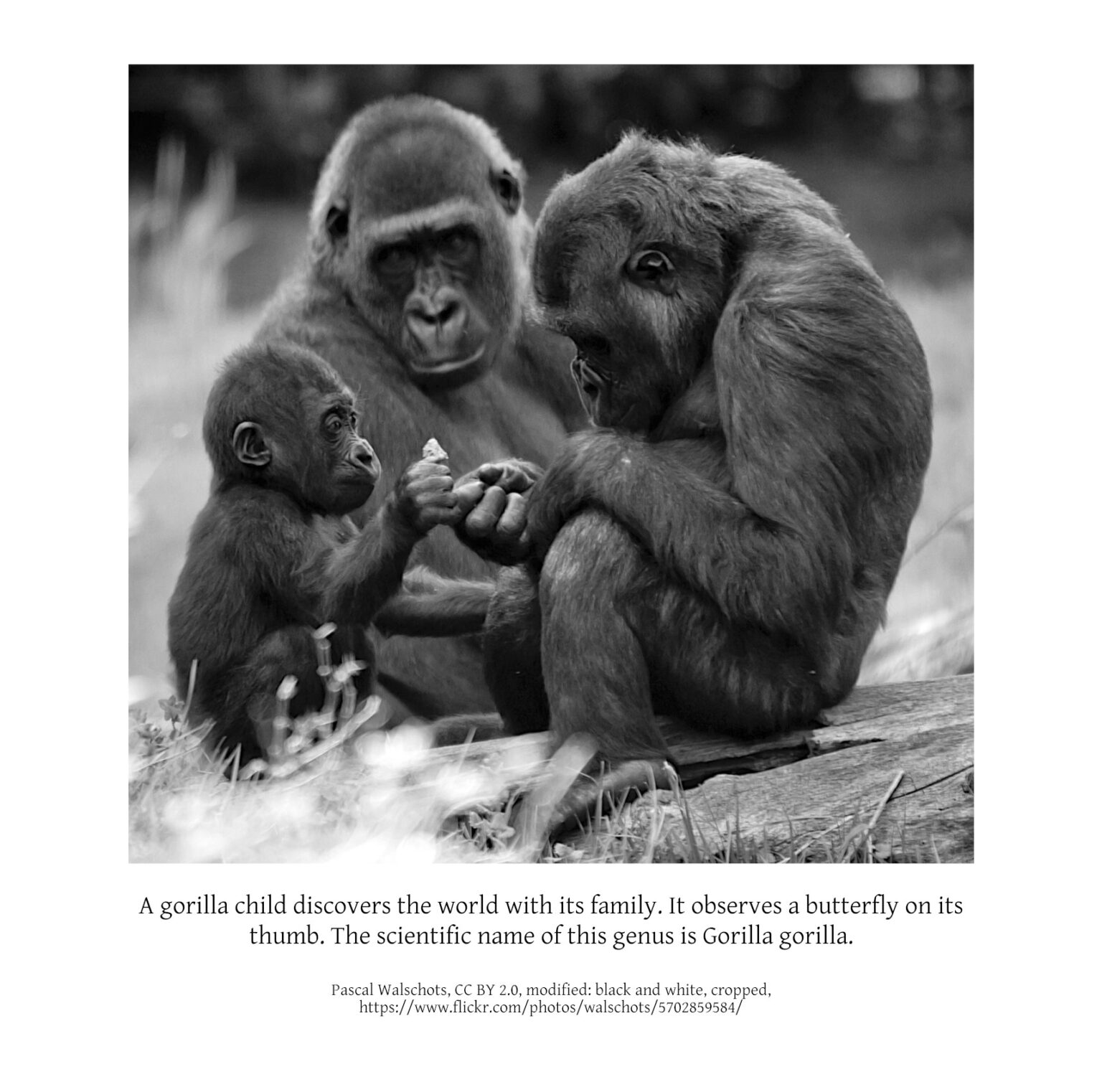Epilogue about Great Apes
To answer the young readers’ possible questions after reading the novel, Adam the Ape has a scientific epilogue about Great Apes. Here are excerpts:
Among the Great Apes, scientists count four genera, or groups of related species: chimpanzees, gorillas, orangutans, and—what many people don’t know—humans.
(…)
Though there are humans with different skin colors, they are more closely related to each other than other animal species. This is because the most recent ancestors of mankind only migrated out of Africa about 100,000 years ago before spreading across the rest of the world.
(…)
Chimpanzees, gorillas, and orangutans, can communicate within their species. They do this through facial expressions, gestures, and sounds. Only humans have learned to speak aloud with words. This ability has developed after millions of years of adaptation and development within human voice boxes and brains. Humans who cannot speak with words can learn sign language to express anything that can be said vocally.
Great Ape mothers have been observed to adopt orphaned children of their own species; they are helpful and care for others, even if there is no benefit to them. The other Great Ape species have feelings like humans do and express their feelings the same ways. Ape friends hug and kiss each other when they meet. They also calm each other through touch when somebody is frightened. Great Apes, like many other animals, feel pain. When they defend their territory against intruders, the skirmishes can even turn into warlike battles.
(…)

